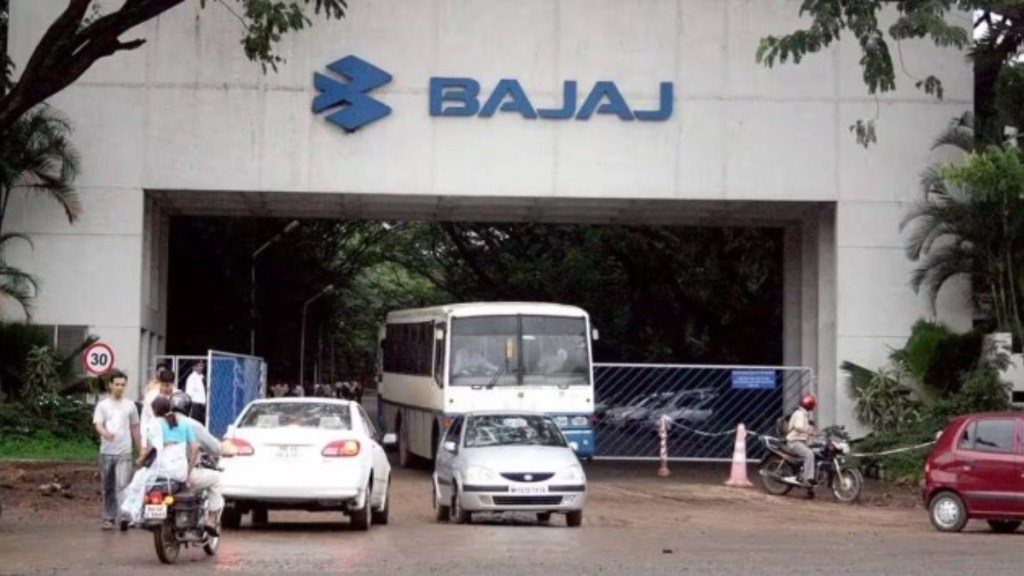Bajaj Auto has started working on the world’s first CNG-powered motorcycle — a first of its kind globally — and is hopeful of commercial launch in calendar year 2025, said Rajiv Bajaj, managing director.
Speaking on CNBC-TV18, Bajaj said there were no CNG two-wheelers anywhere in the world, and they were working on the motorcycle, though it was at an early stage. It was not easy to package a large CNG cylinder on motorcycles where space is a challenge, so the company focus was on getting the product right, he said. Bajaj said there was a 50-65% reduction in fuel cost and operating costs. The emission levels were lower compared to ICE vehicles . The CNG prototype had seen a 50% reduction in CO2, 75% in Carbon Monoxide and a reduction of almost 90% in non-methane hydrocabon emissions.
In the past, there have been reports and shots of the CNG-powered motorcycle prototype being tested and related patent filings by the company.
The company was also going by the market response to their CNG-powered 3-wheelers and expected a similar demand for the CNG motorcycles. Around 70% of the cargo and passenger 3-wheelers sold by Bajaj Auto were CNG-powered because of the operating costs and environmental benefits. Even if the CNG segment accounted for 10-20% of the market share, it would mean 2,00,000 units a month, Bajaj said.
In addition, the company is also ramping up the production capacity of Triumph motorcycles and the electric scooter, Chetak. Bajaj said the Chetak motorcycles had gained market share from 11% a few months ago to 15% this month (Vahan data), making Bajaj among the number three EV 2W company. “We are averaging at 10,000 units a month and constrained by capacity,” he said.The production capacity of Chetak e-scooters is being expanded to 20,000 units with a target to gain a 20% market share. A new Chetak scooter is all set for a launch next month.
Bajaj said the company was surprised with the response to the Triumph motorcycle, given the strong presence of Eicher Motors’ motorcycles in this segment. The company had initially planned for production of 5,000 units per month. The Triumph motorcycle production is being expanded to 10,000 units a month during the third quarter. The company was expecting sales of 18,000 units of the two Triumph bikes during the third quarter.
On the recovery of the two-wheeler market, Bajaj said the company had seen a 20% year-on-year growth in domestic motorcycle sales during the October-November festival season. The 125cc segment grew by 50% by the 100cc segment declined by 10%.
Box–Auto industry over-taxed, over-regulated
Bajaj blamed the decline in the entry-level auto segment on the government’s regulation and high taxation regime. The aam admi in India is being made to pay on an average about 15% more in taxation terms compared to their counterparts in other similar economies, Bajaj said. The two-wheeler industry suffers from over-regulations and over-taxation, he said.
“The two-wheeler industry in this country has suffered in recent times not so much because of the Covid lockdown, not so much because of commodity prices, not so much because of the chip and ships shortage as it as for the fact that it is over-regulated and over-taxed,” Bajaj said. This view has also been echoed by Venu Srinivasan of the TVS Group and Maruti Suzuki’s R C Bhargava, Bajaj added.
GST in India was at 28%, while in Brazil it was 9.25%, Malaysia and Vietnam was at 10%, Thailand ( 7%), the Philippines (12%) and Indonesia was at 11%. “When new technology is introduced for safety or emissions, we need to re-look at the GST structure if we want industry to grow and India to continue to be a powerhouse in two-wheelers and if we want employment to grow”, Bajaj said. The new regulations brought in for emissions and safety norms had pushed up the cost of an average motorcycle by 35%, he pointed out.








